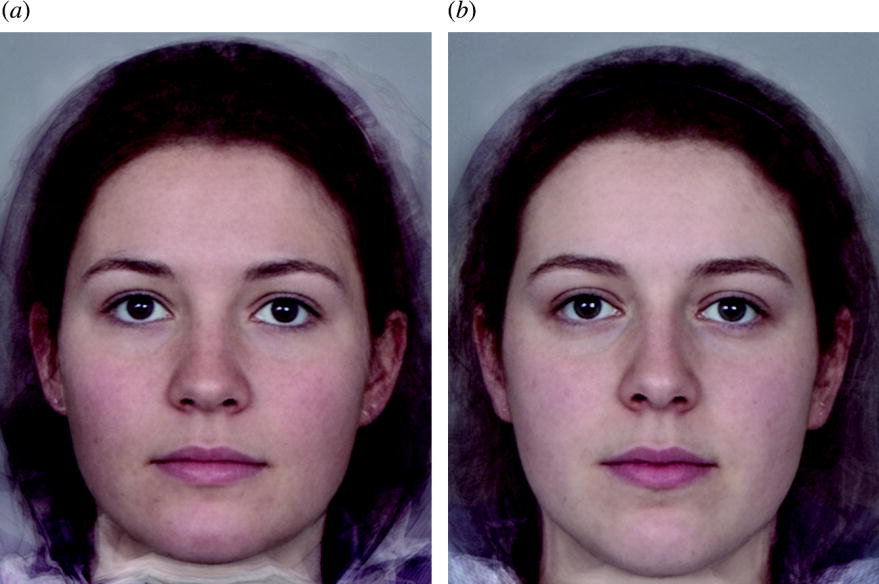D
Deleted member 26859
Greatest Blackpill Philosopher of Our Time
- Joined
- Feb 25, 2023
- Posts
- 7,057
- Reputation
- 11,288
Every study confirms that estrogen and progesterone darken skin. Testosterone also does not darken skin.

 elifesciences.org
elifesciences.org
"The association between pregnancy and altered cutaneous pigmentation has been documented for over two millennia, suggesting that sex hormones play a role in regulating epidermal melanocyte (MC) homeostasis. Here we show that physiologic estrogen (17β-estradiol) and progesterone reciprocally regulate melanin synthesis"
onlinelibrary.wiley.com
"A number of studies have shown that epidermal melanocytes are estrogen responsive, although the responses are often contradictory and difficult to interpret. In female guinea pigs, after ovariectomy the melanin content of epidermal melanocytes decreases; many become smaller in size and exhibit shortened dendritic processes (134). Furthermore, ovariectomized animals that were treated with estradiol either locally or systemically showed an increase in melanin both inside and outside the melanocytes in all regions examined"
There is also some evidence that fluctuations of these hormones during the menstrual cycle may effect epidermal pigmentation in some women. In one study, 62% of women consistently noticed darkening of the peri-ocular skin towards the end of their menstrual cycle immediately prior to menstruation (141). There have also been reports of estrogen-containing oral contraceptives causing hyperpigmentation of the face in 8–29% of women (142). The use of dermal ointments containing estrogens has also resulted in the intense pigmentation of the genitals, mammary areola and linea alba of the abdomen in both male and female infants ranging from 4 months to 2 years (107).
onlinelibrary.wiley.com
Oestrogen also stimulates melanogenesis, along with thyroxine and melanocyte-stimulating hormone, and this can result in premenstrual hyperpigmentation. The effects of oestrogen on pigmentation were first inferred from changes in pigmentation observed during pregnancy, including patches of increased pigmentation on the face, and darkening of the skin of the areolae, the perineum, and the skin over the linea alba, which fades shortly after delivery. Hyperpigmentation is also observed in some women using oral contraceptives.Oestrogens induce salt and water retention, causing oedema of the hands and feet, which is a feature of premenstrual syndrome."

www.google.com
"Hadley: Yes, we found that progesterone darkened the skin in frogs, whereas testosterone did not."
onlinelibrary.wiley.com
"progesterone or estradiol in pg doses was effective in darkening the skin."

 www.ncbi.nlm.nih.gov
www.ncbi.nlm.nih.gov

"Composite faces of the (a) 10 women with highest and (b) 10 with lowest levels of late follicular oestrogen metabolite (oestrone-3-glucuronide, E1G)."
The high estrogen face is clearly darker, with browner skin and darker eye color.
"The high oestrogen face was rated as much more feminine, attractive and healthy than the low reproductive hormone face (all t>6.31, p<0.001, d.f.=20)using a one-sample t-test on strength of preference. These results cannot be due to a mediating effect of age on facial appearance and hormones as there was no significant difference in age of the composites (low, M=20.8, s.d.=1.5; high, M=20.4, s.d.=1.8; t=0.54, p=0.60, d.f.=18). All face ratings were highly consistent (α>0.9)"
@SwoleChad69 dark estrogenic cuck boy
Sex steroids regulate skin pigmentation through nonclassical membrane-bound receptors
Two receptors have been identified that can be targeted in melanocytes with selective small molecule agonists to modulate human skin color."The association between pregnancy and altered cutaneous pigmentation has been documented for over two millennia, suggesting that sex hormones play a role in regulating epidermal melanocyte (MC) homeostasis. Here we show that physiologic estrogen (17β-estradiol) and progesterone reciprocally regulate melanin synthesis"
Error - Cookies Turned Off
onlinelibrary.wiley.com
"A number of studies have shown that epidermal melanocytes are estrogen responsive, although the responses are often contradictory and difficult to interpret. In female guinea pigs, after ovariectomy the melanin content of epidermal melanocytes decreases; many become smaller in size and exhibit shortened dendritic processes (134). Furthermore, ovariectomized animals that were treated with estradiol either locally or systemically showed an increase in melanin both inside and outside the melanocytes in all regions examined"
There is also some evidence that fluctuations of these hormones during the menstrual cycle may effect epidermal pigmentation in some women. In one study, 62% of women consistently noticed darkening of the peri-ocular skin towards the end of their menstrual cycle immediately prior to menstruation (141). There have also been reports of estrogen-containing oral contraceptives causing hyperpigmentation of the face in 8–29% of women (142). The use of dermal ointments containing estrogens has also resulted in the intense pigmentation of the genitals, mammary areola and linea alba of the abdomen in both male and female infants ranging from 4 months to 2 years (107).
Error - Cookies Turned Off
onlinelibrary.wiley.com
Oestrogen also stimulates melanogenesis, along with thyroxine and melanocyte-stimulating hormone, and this can result in premenstrual hyperpigmentation. The effects of oestrogen on pigmentation were first inferred from changes in pigmentation observed during pregnancy, including patches of increased pigmentation on the face, and darkening of the skin of the areolae, the perineum, and the skin over the linea alba, which fades shortly after delivery. Hyperpigmentation is also observed in some women using oral contraceptives.Oestrogens induce salt and water retention, causing oedema of the hands and feet, which is a feature of premenstrual syndrome."
Peptides of the Pars Intermedia
The Novartis Foundation Series is a popular collection of the proceedings from Novartis Foundation Symposia, in which groups of leading scientists from a range of topics across biology, chemistry and medicine assembled to present papers and discuss results. The Novartis Foundation, originally...www.google.com
"Hadley: Yes, we found that progesterone darkened the skin in frogs, whereas testosterone did not."
Error - Cookies Turned Off
onlinelibrary.wiley.com
"progesterone or estradiol in pg doses was effective in darkening the skin."

Facial appearance is a cue to oestrogen levels in women
Although many accounts of facial attractiveness propose that femininity in women's faces indicates high levels of oestrogen, there is little empirical evidence in support of this assumption. Here, we used assays for urinary metabolites of oestrogen (oestrone-3-glucuronide, ...
"Composite faces of the (a) 10 women with highest and (b) 10 with lowest levels of late follicular oestrogen metabolite (oestrone-3-glucuronide, E1G)."
The high estrogen face is clearly darker, with browner skin and darker eye color.
"The high oestrogen face was rated as much more feminine, attractive and healthy than the low reproductive hormone face (all t>6.31, p<0.001, d.f.=20)using a one-sample t-test on strength of preference. These results cannot be due to a mediating effect of age on facial appearance and hormones as there was no significant difference in age of the composites (low, M=20.8, s.d.=1.5; high, M=20.4, s.d.=1.8; t=0.54, p=0.60, d.f.=18). All face ratings were highly consistent (α>0.9)"
@SwoleChad69 dark estrogenic cuck boy














